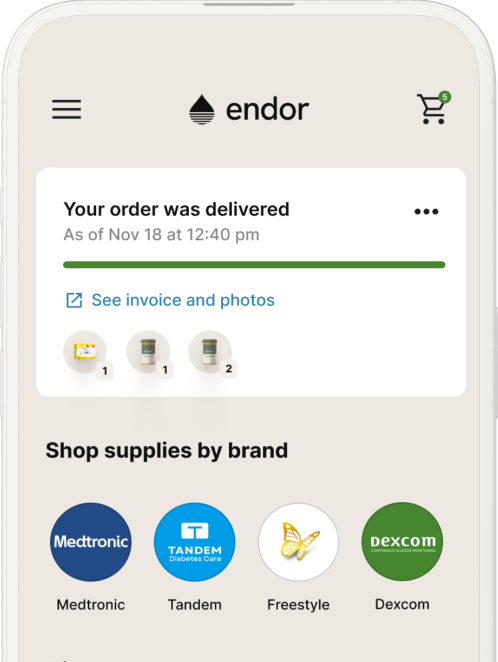Continuous Glucose Monitors in Canada
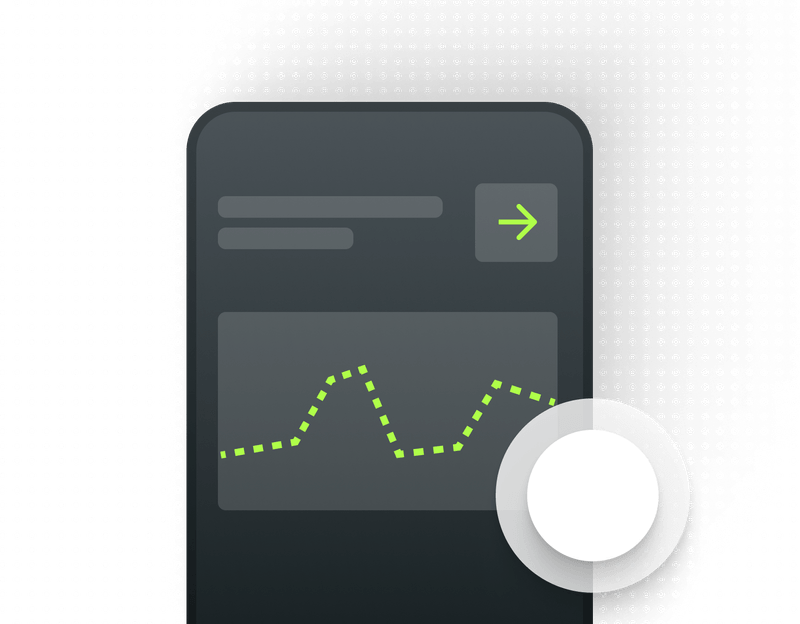
Whether you’re living with diabetes, have prediabetes, or simply want deeper insights into your health—CGMs (Continuous Glucose Monitors) are transforming how Canadians track and understand their glucose levels. This guide will help you understand how CGMs work, who they’re for, and how to choose the right one.
To explore your options, check pricing, and get support from a certified diabetes educator, download the Endor Health app and book a free virtual appointment.
CONTENTS
What is a CGM
A CGM is a small wearable device that continuously tracks your glucose (sugar) levels throughout the day and night. Instead of finger pricks, CGMs use a tiny waterproof sensor placed just under the skin to measure glucose in the interstitial fluid. The sensor transmits data to your phone or reader, giving you real-time insights, trends, and alerts.
CGMs are used by:
- People with Type 1 or Type 2 Diabetes
- Those with prediabetes
- People interested in optimizing their health
- Athletes or individuals tracking nutrition and recovery
- People with hypoglycemia or those prone to hypoglycemic symptoms
How do CGMs work
CGMs consist of a:
- Sensor: Inserted under the skin to measure glucose and disposed of after sensor duration
- App or Reader: Displays your glucose readings and trends in a free app on your phone that you download from the manufacturer’s site or store. If you don’t use a smart phone, you can purchase a separate reader to display your readings
Clinical studies continue to show CGMs improve glycemic control, reduce time spent in hypo/hyperglycemia, and increase confidence and engagement in self-management.
Curious if a CGM is right for you? Start with a free virtual consultation in the care section of the Endor Health app.
Why choose to wear a CGM?
Wearing a CGM can help you:
- Catch highs and lows before they happen
- See how your body reacts to food, exercise, and stress
- Reduce the need for fingersticks
- Improve HbA1c and time-in-range (TIR)
- Make smarter choices day-to-day
What CGMs are available in Canada?
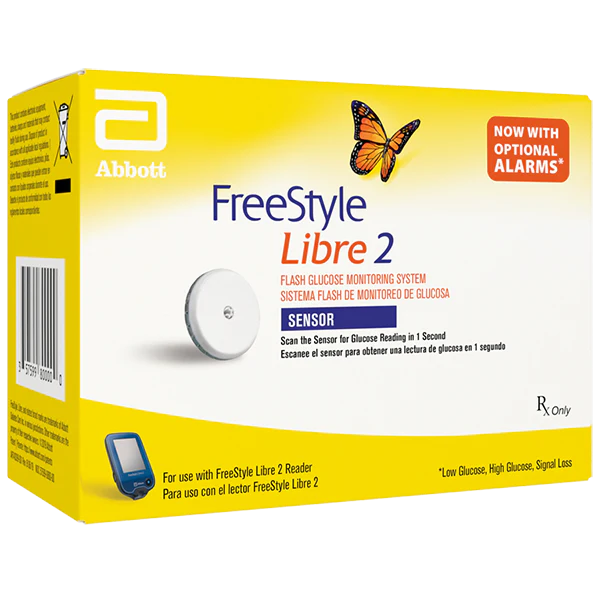
FreeStyle Libre 2 (Abbott)
Sensor wear time: 14 days
Glucose measurement frequency: Every 1 minute
Alerts: Optional low/high glucose alarms
Warm-up time: 60 minutes
Approved ages: 4 years and older
App: FreeStyle Libre 2
Approved site(s): Back of upper arm
Cost at Endor Health: $102 per sensor
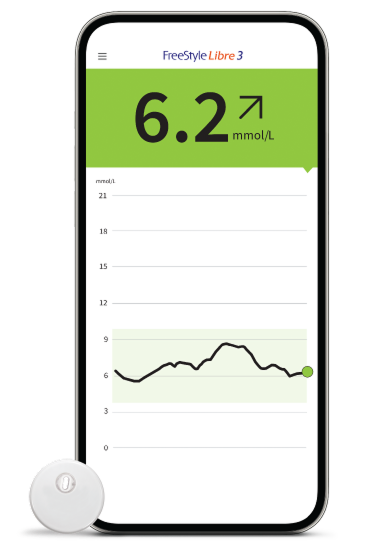
Freestyle Libre 3 Plus
Smallest CGM sensor available
Sensor wear time: 15 days
Glucose measurement frequency: Every 1 minute
Alerts: Customizable low/high glucose alerts
Warm-up time: 60 minutes
Approved ages: 2 years and older
App: FreeStyle Libre 3
Approved site(s): Back of upper arm
Cost at Endor Health: $114.76 per sensor
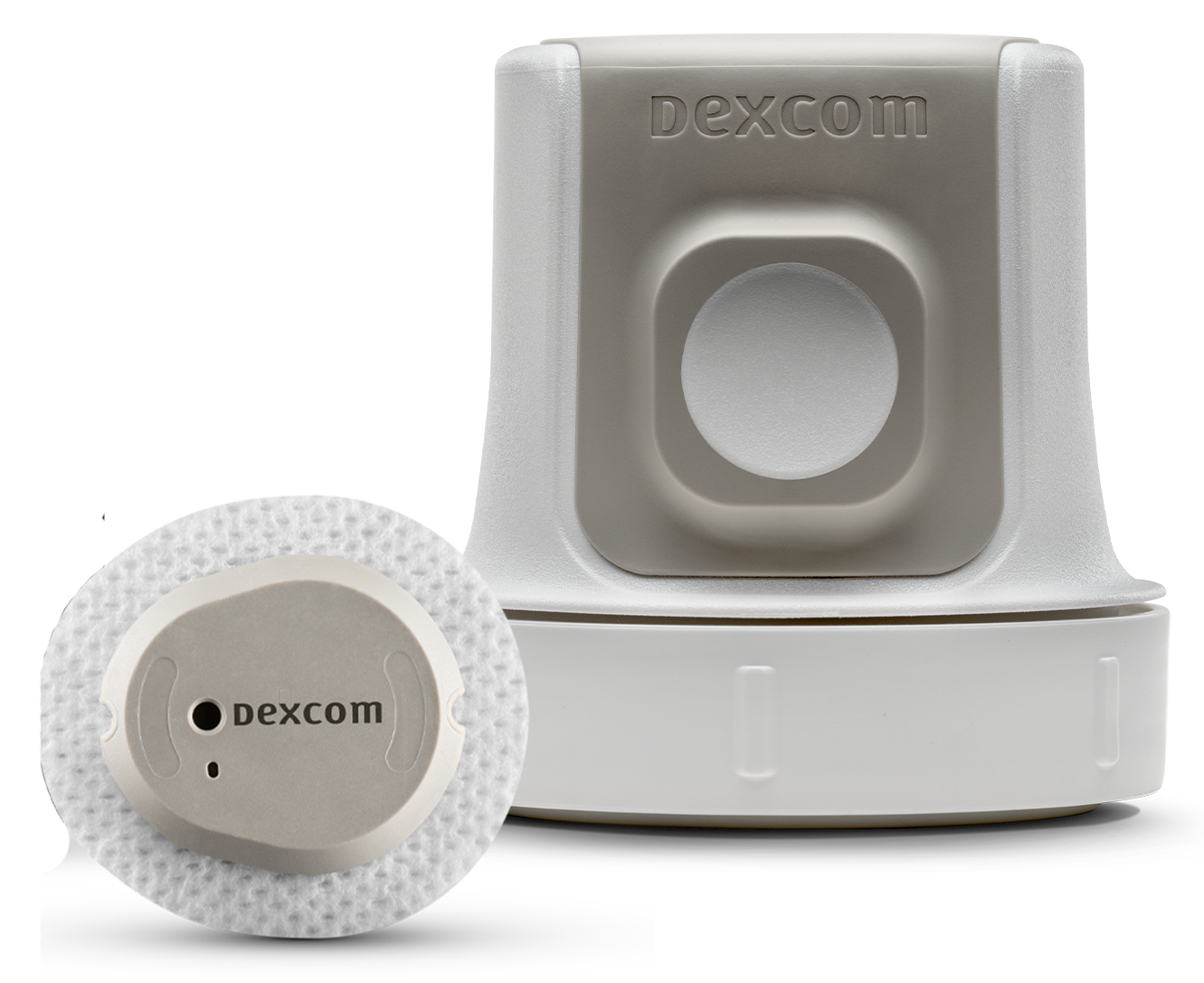
Dexcom G7
Sensor wear time: 10 days
Glucose measurement frequency: Every 5 minutes
Alerts: Customizable alerts, including predictive low alerts (know BEFORE you’re low)
Warm-up time: 30 minutes
Approved ages: 2 years and older
App: Dexcom G7 (connects to Apple Watch)
Approved site(s): Back of upper arm, abdomen (not in pregnancy), upper buttocks (ages 2–6 only)
Cost at Endor Health: $87 per sensor (20% off with prescription)
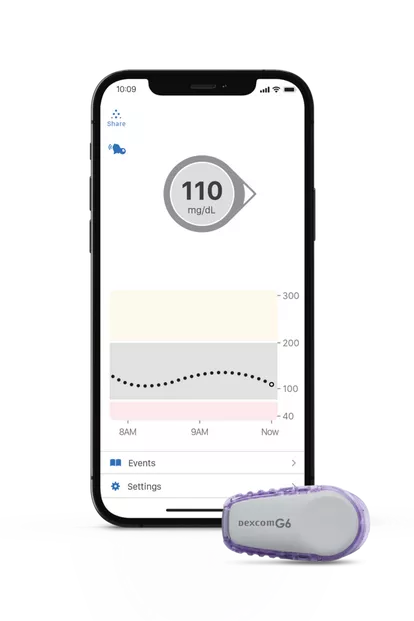
Dexcom G6
Sensor wear time: 10 days
Glucose measurement frequency: Every 5 minutes
Alerts: Customizable alerts, including predictive low alerts
Warm-up time: 2 hours
Approved ages: 2 years and older
App: Dexcom G6 (can connect to Apple watch)
Approved site(s): Abdomen (ages 2+), upper buttocks (ages 2–17), back of upper arm (18+)
Note: Requires a separate transmitter (unlike the G7, which has an all‑in‑one design) which lasts up to 3 months
Cost at Endor Health: Transmitter $39.99 + Sensors $299 (3 pack)

Medtronic Guardian 4
For use only with a Medtronic Insulin Pump
Sensor wear time: 7 days
Glucose measurement frequency: Every 5 minutes
Requires separate transmitter
Alerts: Advanced alerts when used with compatible pump (including predictive alerts)
Warm-up time: 2 hours
Approved ages: 7 years and older
App: Guardian app; also displays on pump screen
Approved site(s): Back of upper arm
Cost at Endor Health: $390 for a pack of 5 sensors
Accuracy
CGMs measure your glucose levels throughout the day and night. But how do we know how accurate their readings are?
Accuracy is measured using something called MARD (Mean Absolute Relative Difference). In simple terms, MARD compares the CGM’s readings to lab-tested blood sugar results. A lower MARD means the CGM is more accurate. For example, a MARD of 9% means the CGM readings are, on average, within 9% of lab-tested values.
Why does accuracy matter?
Accurate readings are important for everyone using a CGM, but especially for people who take insulin, either through injections or a pump. If your CGM reading is off, it could lead to taking too much or too little insulin — which can cause low or high blood sugars. That’s why choosing a CGM with strong accuracy is key for safe and effective diabetes management.
| CGM | MARD – Adults | MARD – Pediatrics |
|---|---|---|
| FreeStyle Libre 2 | 9.2% | 9.7% |
| FreeStyle Libre 3 | 7.5% | 8.2% |
| Dexcom G7 | 8.2% | 8.1% |
| Medtronic Guardian 4 | 10.6% | 11.6% |
Several factors can affect the accuracy of CGM readings. Accuracy may be reduced during the sensor’s warm-up period, and rapid changes in blood sugar—such as after eating or exercising—can create a delay between your actual blood glucose and the CGM reading.
Lying on the sensor (called “compression”) can sometimes lead to falsely low readings, and dehydration may reduce the quality of interstitial fluid readings. Proper sensor placement on approved body sites is important, as off-label sites may yield less accurate results. Skin issues, poor adhesion, or scarring at the insertion site can also interfere with performance. While most newer CGMs no longer require calibration, some older systems do, and incorrect calibration can affect accuracy. Additionally, certain medications (like high-dose acetaminophen) and damaged or expired sensors may impact results.
If a reading seems off, it’s safest to confirm with a fingerstick poke and glucometer, especially before making insulin dosing decisions.
Sharing Data
All CGMs available in Canada allow you to share your glucose data with healthcare providers and loved ones through connected apps and cloud-based platforms. This can be especially helpful for people who use insulin or are managing diabetes closely with a care team.
Sharing your data allows your healthcare providers to review your glucose trends and make more informed decisions about your treatment. It can also give family members or caregivers peace of mind and help them support you more effectively, particularly in situations where you’re at risk for low or high blood sugar.
Overall, data sharing makes diabetes management more connected, proactive, and collaborative.
Cost & Coverage
CGM costs can vary by sensor and province, but many are covered by private insurance or provincial programs (e.g., ADP in Ontario, BC PharmaCare, Alberta Blue Cross). Some provincial funding is based on specific eligibility criteria and eligibility can be assessed by your diabetes physician. A prescription is needed to bill a provincial or private payer for CGM sensors.
| Device | Price |
|---|---|
| Dexcom G7 | $87 (or $69.20 with prescription) for 10 days |
| FreeStyle Libre 2 | $102 for 14 days |
| FreeStyle Libre 3 | $114 for 15 days |
| Guardian 4 | $390 for 30 days |
Ready to get Started?
Download the Endor Health app to:
- Compare CGM pricing
- Get free direct-to-door delivery anywhere in Canada
- Book a free appointment with a diabetes educator or a doctor
- Receive help with coverage, CGM setup, and ongoing support

